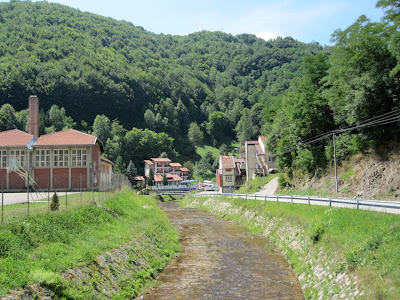My best moment of Winter is when I leave Zurich toward South-East and
usually I spend much of my stay in Serbia in the Vojvodina region (the flat
northern part of Serbia).
There are a lot of pretty towns that are really
worth visiting, and once when my husband showed me where he went to
college I had the opportunity to meet Backa Topola (Бачка
Топола) a municipality in the North Backa District.(above a postcard from Backa Topola of 1964)
(Backa Topola Postcard from kasina at skyscrapercity)
Due
to its favorable geographical location this place was settled from
very early on. When in the middle age its inhabitants were all Serbs,
after being destroyed by kuruc rebels in 1704, around 1750 it was
populated by Hungarians and Slovaks and still today its population is
around 60% Hungarians and 30% Serbs (the rest is composed by other
ethnic groups).
It's
a picturesque town shaped by its austro-hungarian buildings.
Near
Backa Topola is a pretty lake called Zobnaticko Jezero (Зобнатичко
Језеро).
There are lots of protected plants, species of insects
and birds around the lake, an oasis of nature and peace.
On
the other side of the lake are structures for tourism: beaches, a
restaurant and possibilities for camping.
The
windmill (Vetrenjaca; Ветрењача)
Until
1969 there were more working windmills that were used for grinding
corn and wheat. The mill was in the ground floor, the second floor
was the apartment of the miller and in the third floor was the
mecanism of the mill. Now it's used for museum purpose.
Horse-racing
was a popular sport among austro-hungarians, and one of the few
racing-tracks of Serbia is located here. Above one of the peculiar buildings at the entrance of the track.
Here the official website of Backa Topola:
www.btopola.org.rs
Here an older post about travelling in Vojvodina:
http://www.sajkaca.blogspot.com/2009/10/best-travel-tips-for-serbia-ethno.html

















































